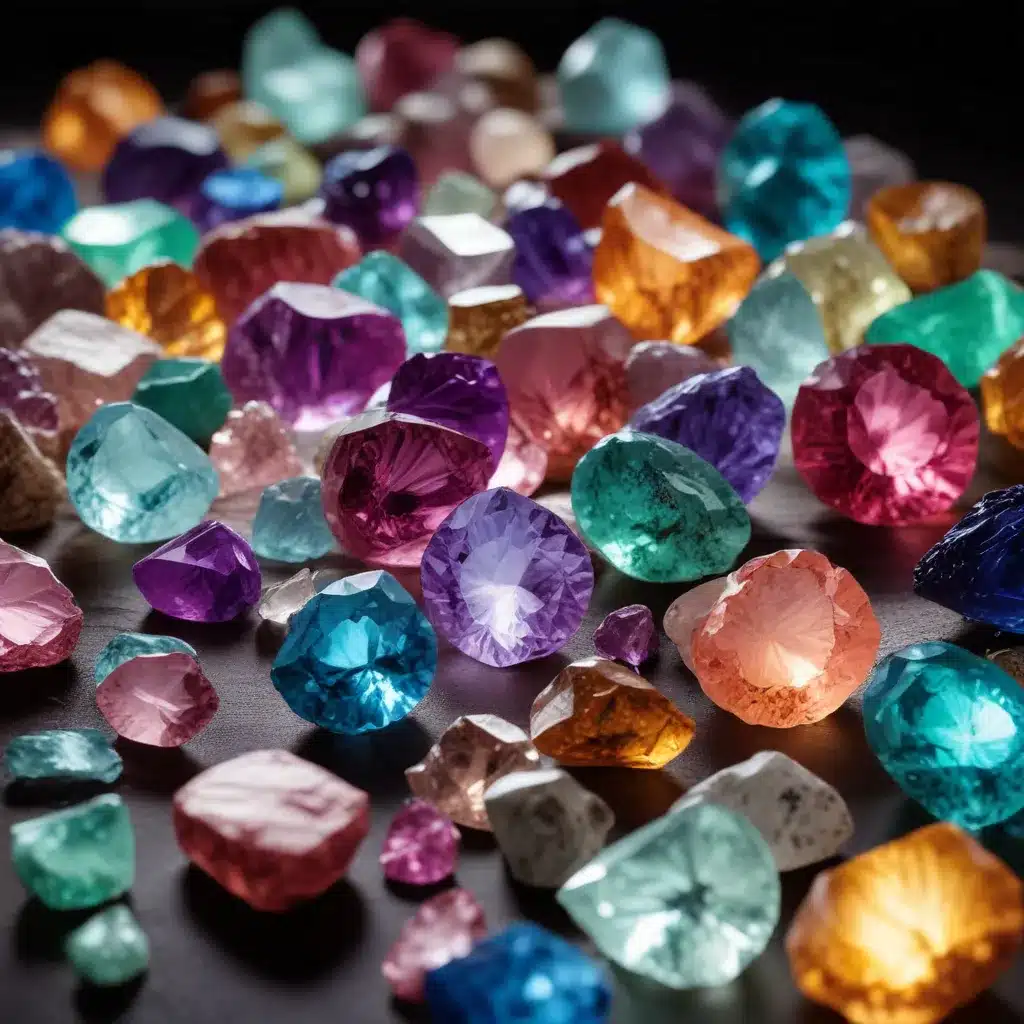
Gems and jewelry have long captivated humanity’s imagination, with tales of luminous stones that shine through the night. From ancient myths to modern scientific analysis, the phenomenon of gemstone luminescence has intrigued and inspired. This article delves into the fascinating world of glowing gemstones, exploring their composition, identification, and applications in the jewelry industry.
Fundamentals of Gemstone Luminescence
Luminescence is the spontaneous emission of light by a substance, distinct from the glow produced by heating (incandescence). In the gemstone realm, there are several types of luminescence at play. Photoluminescence occurs when a gem absorbs energy from light, resulting in the release of that energy as visible light. This can manifest as fluorescence, where the glow ceases immediately upon removal of the excitation source, or phosphorescence, where the glow persists for a period.
Another form of luminescence in gems is triboluminescence, which is light emission caused by the breaking of chemical bonds within the material, such as when a diamond is rubbed with a cloth. Thermoluminescence, on the other hand, is the release of previously absorbed electromagnetic radiation when a gem is heated.
Gemstone Composition and Luminescence
The luminescent properties of gemstones are closely tied to their chemical composition and crystal structure. Trace elements, such as chromium, manganese, or uranium, can significantly influence a gem’s ability to emit light. For example, the red glow of rubies is due to the presence of chromium, while the green fluorescence of emeralds is attributed to trace amounts of chromium and vanadium.
The mineral structure of a gem also plays a crucial role. Gems with a highly ordered, crystalline structure tend to exhibit more pronounced luminescent effects compared to amorphous materials. Environmental factors, such as temperature, pressure, and exposure to radiation, can further impact a gemstone’s luminescent behavior.
Gemstone Identification and Luminescence
Luminescence has become an invaluable tool in the identification and analysis of gemstones. By observing the unique luminescent patterns and colors exhibited by a gem under ultraviolet (UV) light, gemologists can often determine its identity and detect any treatments or enhancements. This technique is particularly useful for distinguishing between natural and synthetic diamonds, as well as identifying certain types of colored gemstones.
Luminescence-based gemstone analysis has also revealed intriguing insights into the internal structure and defects within gems. By studying the luminescent characteristics, researchers can gain a deeper understanding of a gem’s formation, history, and potential treatments, ultimately enhancing the quality and reliability of gemstone identification.
Colored Gemstones and Luminescence
Colored gemstones, such as rubies, sapphires, and emeralds, often display captivating luminescent properties that add to their allure. The relationship between a gem’s color and its luminescence is complex, as the presence of trace elements and the structure of the crystal lattice can both influence these characteristics.
In some cases, the luminescence of a colored gemstone can be enhanced through various treatments, such as heat or radiation exposure. However, ethical considerations come into play, as consumers should be aware of any treatments that may affect the gem’s natural properties and value.
Diamonds and Luminescence
Diamonds are perhaps the most well-known gemstones with luminescent qualities. While the majority of diamonds exhibit a blue fluorescence under UV light, the intensity and color of this glow can vary greatly, depending on the diamond’s origin, treatment history, and the presence of certain impurities.
Luminescence has become an important factor in diamond grading, as it can provide valuable insights into a diamond’s characteristics and potential treatments. Synthetic diamonds, which are increasingly common in the market, also exhibit distinct luminescent patterns that help gemologists identify them.
Gemstone Treatment and Luminescence
The various treatments applied to gemstones, such as heat, irradiation, or fracture filling, can significantly alter their luminescent properties. Gemologists often use luminescence as a diagnostic tool to detect these treatments and ensure the integrity of gemstones.
However, the ethical implications of gemstone treatments must be carefully considered. Consumers should be informed about any treatments that may affect a gem’s natural characteristics and value, and the jewelry industry as a whole must maintain transparency and integrity in its practices.
Gemstone Luminescence in Jewelry
The captivating glow of luminescent gemstones has long been celebrated in jewelry, from ancient times to the present day. Designers often incorporate these unique properties into their creations, using them to enhance the visual appeal and narrative of their pieces.
As consumer interest in the science and stories behind gemstones continues to grow, the jewelry industry has recognized the value of highlighting the luminescent qualities of precious stones. This trend not only satisfies the curiosity of discerning buyers but also adds an extra layer of enchantment to the jewelry-wearing experience.
Advanced Gemstone Luminescence Studies
Ongoing research in the field of gemstone luminescence continues to push the boundaries of our understanding. Emerging techniques, such as advanced spectroscopic analysis and high-resolution imaging, are providing new insights into the underlying mechanisms and potential applications of this phenomenon.
As the jewelry industry and scientific community collaborate, the study of gemstone luminescence is poised to yield valuable advancements in gem identification, treatment detection, and the overall appreciation of these captivating natural wonders. The glow of precious stones is not only a source of beauty but also a window into the fascinating world of gemological science.
To learn more about the world of gemstones and jewelry, be sure to visit Shelby Gem Factory, where you can explore a wide selection of luminescent and expertly crafted gemstone pieces.

